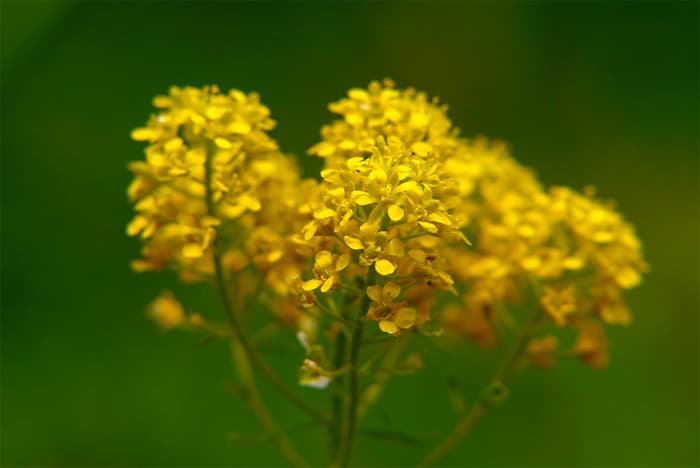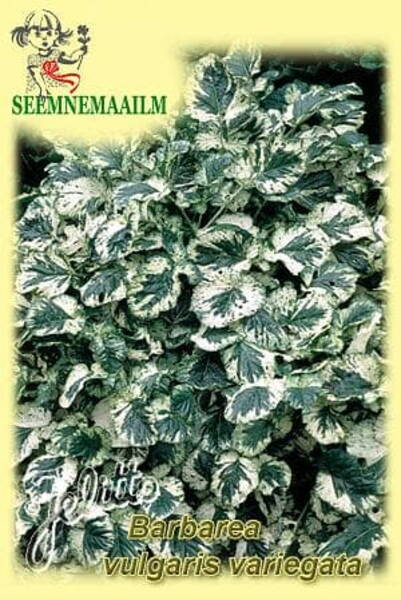Your shopping cart is empty!
Common wintercress "Variegata Winter Cream" (garden yellowrocket, common wintercress)
Yellow scurvy-grass (Common wintercress, garden yellowrocket) - Barbarea vulgaris.
Plant height: 60 cm.
Flowering time: V-VII.
Winter hardiness zones: Z5-8.
Location: jaundice are light-loving, drought-resistant, and does not tolerate dampness.
Soil: prefer loose, permeable, humus-rich soil.
Care: young plants are covered with spruce branches for the winter. When planting plants, add compost to the soil or feed the plants before flowering with a solution of complete mineral fertilizer.
Reproduction: sowing seeds in spring or before winter. Sow into the ground in May - June. The optimal temperature for germination is +16 °C. Shoots appear 7-14 days after sowing. They are thinned out, leaving 10-15 cm between plants. Perennial species after overwintering are transplanted into flower beds. Young plants bloom in the second year. Can be propagated by summer cuttings. Biennial species die off after flowering and fruiting.
Use: in ridges, mixborders, on rocky hills. Low-growing varieties are suitable for growing in containers and flowerpots.
Partners: combined with spring flowers of suitable colour, plain or contrasting (tulip, forget-me-not, pansy).

Common wintercress, garden yellowrocket, herb-Barbaras, land cress, rocket cress, winter-cress, wintercress, yellow rocket, yellow scurvy-grass. Bot. syn.: Barbarea arcuata, Barbarea stricta auct. non Andrz., Campe barbarea, Erysimum barbarea L.
Plant height: 60 cm.
Flowering time: V-VII.
Winter hardiness zones: Z5-8.
Location: jaundice are light-loving, drought-resistant, and does not tolerate dampness.
Soil: prefer loose, permeable, humus-rich soil.
Care: young plants are covered with spruce branches for the winter. When planting plants, add compost to the soil or feed the plants before flowering with a solution of complete mineral fertilizer.
Reproduction: sowing seeds in spring or before winter. Sow into the ground in May - June. The optimal temperature for germination is +16 °C. Shoots appear 7-14 days after sowing. They are thinned out, leaving 10-15 cm between plants. Perennial species after overwintering are transplanted into flower beds. Young plants bloom in the second year. Can be propagated by summer cuttings. Biennial species die off after flowering and fruiting.
Use: in ridges, mixborders, on rocky hills. Low-growing varieties are suitable for growing in containers and flowerpots.
Partners: combined with spring flowers of suitable colour, plain or contrasting (tulip, forget-me-not, pansy).

Common wintercress, garden yellowrocket, herb-Barbaras, land cress, rocket cress, winter-cress, wintercress, yellow rocket, yellow scurvy-grass. Bot. syn.: Barbarea arcuata, Barbarea stricta auct. non Andrz., Campe barbarea, Erysimum barbarea L.












